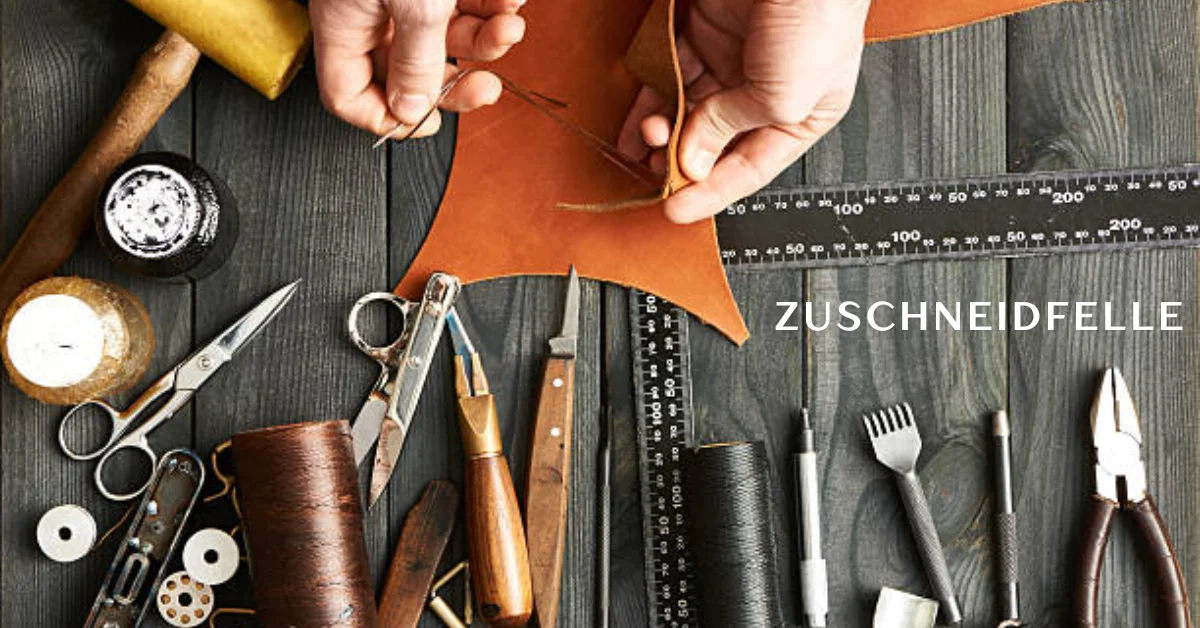Introduction
In the ever-evolving world of leather production and fur processing, Zuschneidfelle or “cut fur skins” is one of the methods to produce high-quality products with perfection, precision, and sustainability. These specially processed fur pieces have a high demand in the fashion, automotive, as well as furnishing industries. This article embraces all Zuschneidfelle—source and processing of material to uses and trade regulations—offering a treasure chest of reference material and expert data for suppliers, manufacturers, and overseas buyers.
What Are Zuschneidfelle?
Zuschneidfelle are half-tanned, pre-cut fur skins usually a lamb, goat, rabbit, or mink fur that has been split up into convenient pieces after half-tanning and is ready to sew or further alter at the same time. As distinct from full pelts, Zuschneidfelle are pre-cut to specific sizes in accordance with end use—gloves, collars, boots, linings, or trimming panels.
They are graded according to species, quality of cut, density of hair, evenness of color, and tanning process—with the highest grades utilized in high-fashion design houses and high-grade upholstery production.
Zuschneidfelle Types and Sources
The range of Zuschneidfelle is immense, varying according to animal origin, tanning processes, and end use. Of the most commonly imported types are:
1. Lamm-Zuschneidfelle (Lamb Cut Skins)
Generally most highly prized for softness, light weight, and cold insulation.
Generally applied for winter clothing, baby products, and high-quality boots.
Major exporters: New Zealand, Iceland, and South Africa.
2. Ziegen-Zuschneidfelle (Goat Cut Skins)
Famous for strength, grain quality, and good dye acceptance.
Best applicable to the manufacturing of gloves, bags, and shoe linings.
Principal regions: India, Pakistan, Ethiopia.
3. Kaninchen-Zuschneidfelle (Rabbit Cut Skins)
Value for money with dense fine soft fur suitable for fashion trim, hats, and accessories.
Usually printed or dyed to simulate top-grade furs.
4. Nerz-Zuschneidfelle (Cut Skins of Mink)
Top-quality cut skins for luxury outerwear and interior use.
Praised for their sheen, firmness, and high-end finish.
Zuschneidfelle Production Phases
Manufacturing of Zuschneidfelle involves a meticulous multi-step process to maintain fur integrity while also being mass producible:
1. Raw Skin Acquisition
Skins are acquired from welfare-killed animals or fur farms in violation of strict animal welfare regulations.
2. Tanning and Preservation
Good quality tanning methods like vegetable tanning, chrome tanning, or alum tanning are utilized to make the skins cuttable, non-putrid, and flexible.
3. Cutting to Precision
The skins are cut into accurate panels or shapes using industrial laser cutting tools or by hand in accordance with desired product dimensions.
4. Grading Quality
Each Zuschneidfell is graded based on:
- Hair density
- Length
- Evenness of color
- Bald spots or blemishes
- Precision of size and shape
5. Packaging and Export
The end-cut skins are bunched, pressed, and humidified packed for export shipping.
Industrial Applications of Zuschneidfelle
Industrial applications of Zuschneidfelle exist in different industries where fur panels with precision are economical and beneficial compared to the application of full skins.
1. Fashion and Apparel Production
Applicable in the manufacture of fur hood trim, fur-lined gloves, fur collars, boots, and headwear for winter.
In high demand during autumn/winter fashion seasons.
Very popular among fast-fashion retailers and couturiers.
2. Car Interiors
Steering wheels, gear knobs, and premium car seat trim feature Zuschneidfelle as a luxury feature.
3. Home Decoration
Interior decoration use in pillow, throw, rug, and upholstery of furniture.
Adds visual warmth and tactile comfort.
4. Craft and Toy Industry
Soft lamb and rabbit hides are utilized in handmade dolls, plush toys, and traditional handicrafts.
Sustainability and Ethical Issues
Present-day consumers are becoming increasingly environmentally and ethically aware toward fur commodities. Therefore, trade in Zuschneidfelle must comply with:
1. Animal Welfare Law
EU and worldwide certified farms using international standards of animal handling methods in harvesting fur.
Closure of routes for endangered species or illegal poaching skins.
2. Waste Minimization
Zuschneidfelle minimize waste since they utilize only the pelt sections required.
Encourages resource efficiency in production in bulk.
3. Biodegradable Tanning
Highlight biodegradable tanning chemicals and water/chemical conservation during processing.
Zuschneidfelle Trading and World Market Forces
World trade of Zuschneidfelle is a billion-dollar market with steady demand in Europe, Asia, and North America.
Key Exporting Countries
Germany, Italy, and Poland (processing centers)
India, Pakistan, and Turkey (raw material source and low-level processing)
China (largest factory and re-export base)
Patterns of Importation
Fashion centers such as Paris, New York, and Tokyo continue to be major importers.
Growth in sustainable companies using environmentally friendly Zuschneidfelle.
Pricing Drivers
Driven by:
- Species and cut type
- Processing quality
- Volume and delivery time
- Fluctuation in market demand
Where to Source Quality Zuschneidfelle
While purchasing Zuschneidfelle for manufacturing or industrial applications, ensure that:
1. Check Certifications
Ensure:
REACH compliance
Processing according to ISO 9001 standards
FurMark or Origin Assured stamps
2. Check Supplier Credibility
Use reputable wholesalers or tanneries with global presence record.
Request sample shipments before ordering bulk lots.
3. Negotiate Smart
Negotiate lower prices using long-term contracts.
Lock delivery schedules, duty, and refund.
Handling and Storage of Zuschneid felle
Quality and integrity of Zuschneid elle are maintained over a time period through proper storage.
1. Climate-Controlled Storage
Store at 5–15°C, humidity content less than 55% to prevent drying out or growth of mold.
2. Avoidance of Sunlight
Natural color is discolored and fur softness gets lost by virtue of UV rays.
3. Periodic Inspection
Quarterly check for pest infestation, odour, or texture break down.
Trends and Innovations in Zuschneid felle
1. Computer Cutting of Fur
Use of CNC laser-guided scissors to obtain accuracy and minimum waste.
2. Faux-Fur-Billowed Hybrid Zuschneid felle
Mixing natural fur with man-made backing to reduce expenses and attract half-ethical consumers.3. Custom-Dyed Panels
Conclusion:
Zuschneidfelle are essentially a combination of conventional expertise and technical efficiency at their very core. Design, precision, and sustainability being the best criteria in worldwide production during current times, pre-cut fur skin means more value to businesses.
